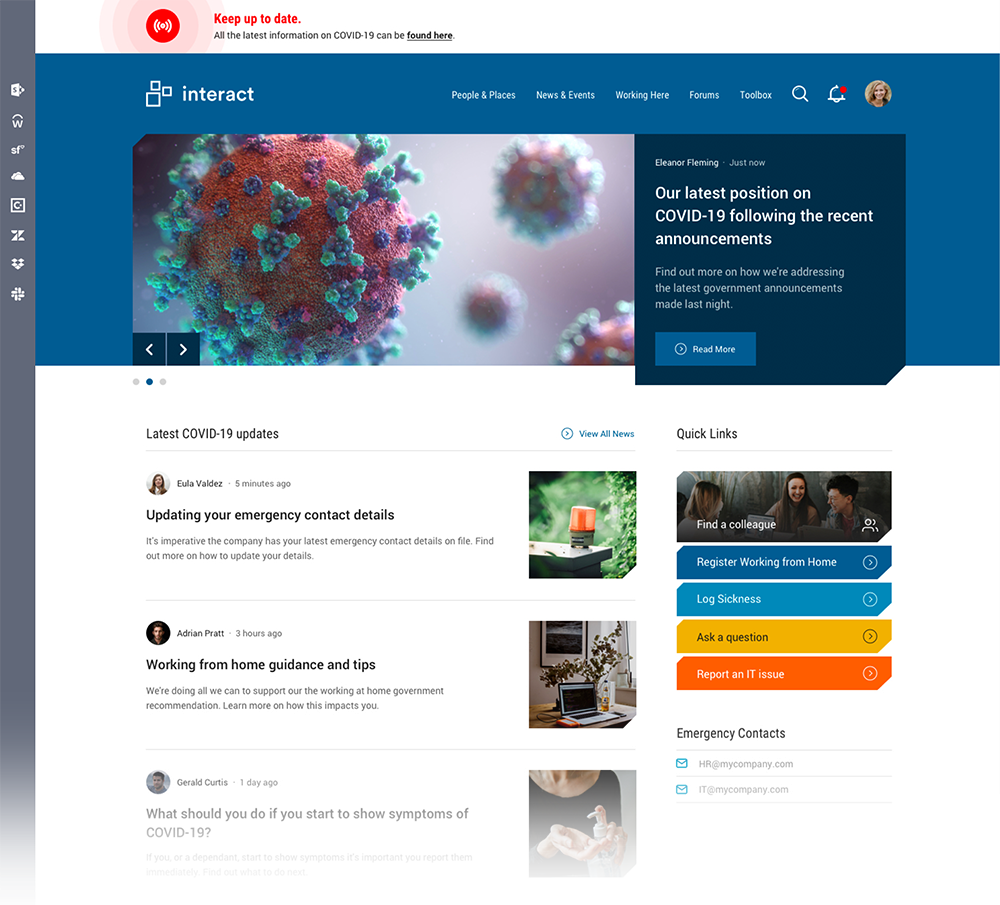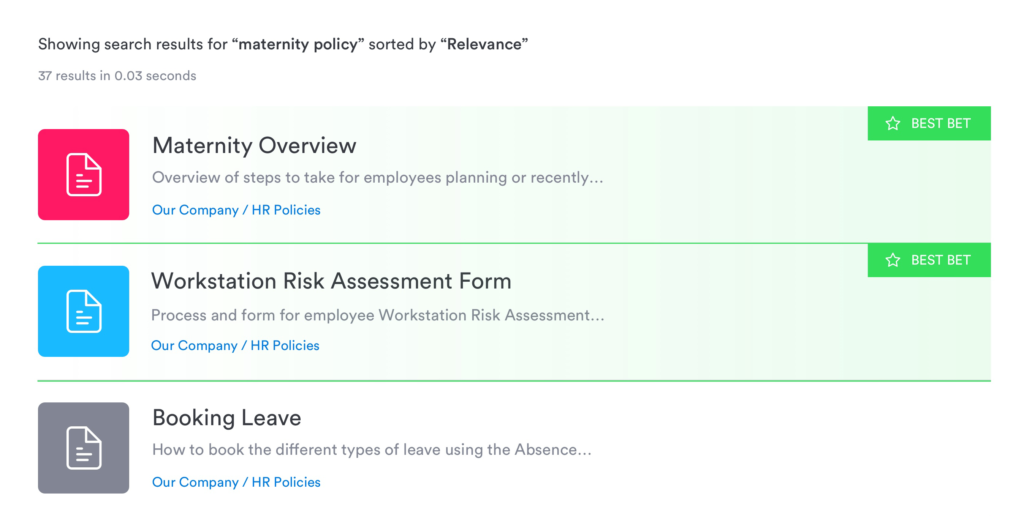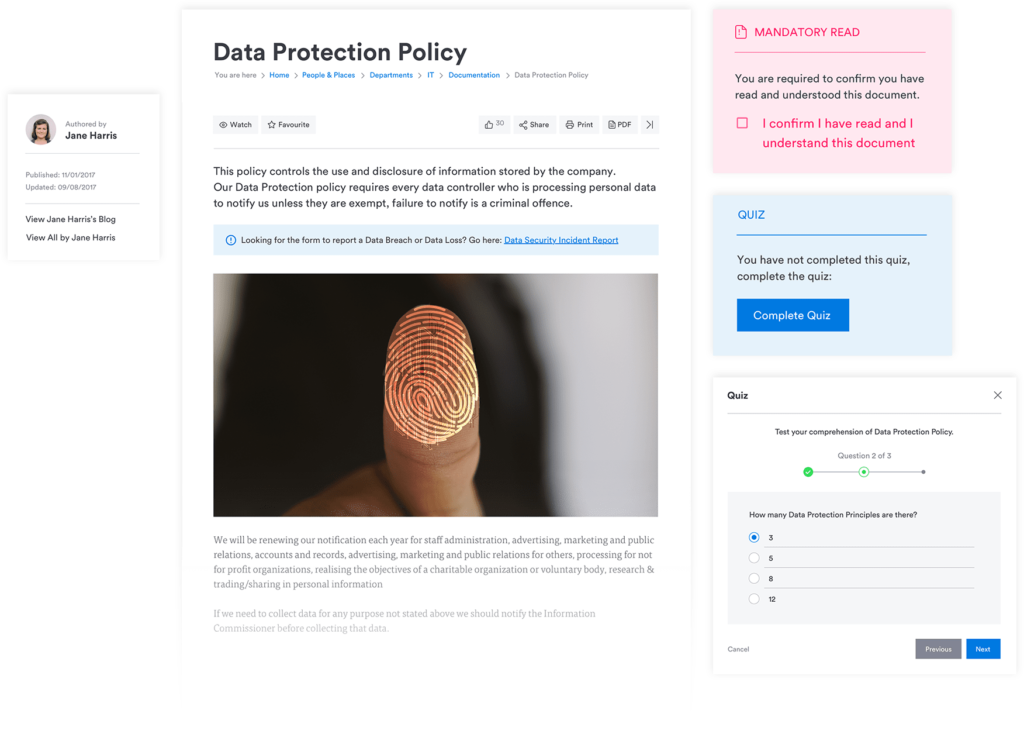As organizations worldwide adapt to a fundamental shift in how and where we work, here’s a breakdown of the tools, apps, and functionality your business needs.
The last few weeks have seen our every day and working lives change at a rapid pace, in an unprecedented situation that sees new updates issued almost by the hour. With the latest guidance around social distancing and home working, our digital workplaces are being put to task. Is yours robust and agile enough to stand up to the challenge?
While the majority of organizations are likely to have a solid foundation in place, these unique circumstances can expose gaps we didn’t even know we had.
Keep your organization connected with agile intranet support
Employees are now needing to find new ways of connecting with information and each other, as concerns rise for well-being and mental health alongside business continuity and productivity. We’re building new environments and behaviors, which will potentially change the workplace forever.
We’re building new environments and behaviors, which will potentially change the workplace forever.
Now is an opportunity to take stock of our current technology stack, how to leverage it more effectively, and assess our ability to adapt and respond in the face of the unexpected.
With our own teams at Interact now working from home en-masse, we’ve taken stock of the must-haves, challenges, priorities, and workarounds that are proving invaluable for staff.
#1. Crisis Communication
Top of everyone’s priority list in the current situation, the continually changing status around COVID-19 has seen us flex the muscles of our crisis comms plan and tools.
Reaching staff out-of-hours, providing regular updates, and ensuring a single source of credible truth for essential information are all on the must-have list.

From a tech perspective, that calls for a centralized CMS – for us, our intranet – and ensuring we have an up-to-date directory of all employee details, including their mobile/cellphone numbers in case of emergency.
Instant, point-in-time updates need supplementing with longer-form content; but we also need to give staff their own voice and space to ask questions, raise concerns, and gain support.
Keep your organization connected with agile intranet support
Our top-rankers:
- Leadership blogs and updates: hearing from those at the top provides much-needed reassurance, guidance, and a sense of continuum, even in the face of uncertainty.
- Our Broadcasts: built into our intranet, the Broadcasts feature pushes urgent updates through homepage banners, email, and SMS where needed. As our crisis status changes, there’s instant notifications pointing to more in-depth information on the intranet.
- A dedicated ‘go-to’ area for all information relating to the crisis: with regular updates and changes going out, crucial information is easily lost in an email inbox. Having a trusted and up-to-date single source of truth in the form of a purpose-built area on the intranet means staff know precisely where to go for trusted information.
- Forums for Q&A: our in-house crisis management team has established a forum for staff to ask questions about the company response to COVID-19. Other staff can view the replies, saving key decision-makers from having to answer the same queries multiple times.
#2. Accessibility
We’ve seen a shift to cloud-based models of working over the last decade, with the majority of organizations now utilizing at least some software-as-a-service (SaaS) or cloud-based applications within their business. This has undoubtedly aided the move to remote working for many at relatively short notice.
However, there are gaps remaining still. Among the challenges for us, we’ve been forced to consider VPN access for on-premise applications hosting protected data, such as our CRM, and how to balance the need for access with security diligence.

There are also staff who need to be contactable and access critical information but aren’t typically desk-based. While this isn’t a particular challenge for us as an organization, it’s a significant consideration for those industries providing key response services during the crisis: healthcare, food markets, distribution services, schools, and more. Assessing their ability to access tools and information is now under the spotlight more than ever.
Our top-rankers:
- Apps, apps, apps: this includes not just our intranet, but all business collaboration and productivity tools such as email, Microsoft Teams, ZenDesk, and more.
- Secure, simple authentication: making it quick and easy for those on-the-go to login from a mobile device is a game-changer for many; reduce the number of logins and passwords they need to remember by using a single sign-on authentication service.
- Notifications (and Do Not Disturb mode): pushing the most essential comms via a cellphone app notification or turning on notifications for your comms channels ensures everyone is reached and prioritized comms aren’t missed. However, now that we can’t see when our colleagues are in a meeting room, the role of statuses and ‘Do Not Disturb’ modes are all the more crucial. When a colleague is screen sharing during a customer call, you don’t want notifications popping up in the corner of the screen.
#3. Rich comms and video
With many employees now working from home for the first time, we’re needing to find new ways of communicating and connecting with our teams and colleagues. Concerns around potential isolation, loneliness, or disconnect are fueling demand for hyper-connectivity: above and beyond the standard email.

In particular, there’s a surge in demand for video calling and conferencing, screen sharing, and real-time group collaboration.
Attempts at a group voice call quickly showed us the shortcomings; with up to 80% of communication being non-verbal, switching on the webcam makes a tremendous difference.
Being able to see your colleagues is not only good for morale; it helps overcome challenges such as interrupting or overtalking one another, or the potential for misinterpretation.

The number of people needing to come together virtually is also much higher than standard. For online group gatherings, presentations, forums, training, or similar, a virtual meeting or webinar tool is better equipped to manage the volume.
Our top-rankers:
- GoToMeeting/GoToWebinar: our in-house remote working champions hosted a session for all staff who wanted to attend, offering their own experiences and tips as long-term remote workers. A GoToMeeting hosted over 25 staff – with at least 15 of those appearing on camera – alongside a presentation via screen sharing. No small feat!
- Microsoft Teams and Zoom: daily team standups or group meetings are going digital, and the ability to see your colleagues is a big morale boost. Teams and Zoom both have the much-needed functionality to make those face-to-face meetings a reality in our new remote working environment.
Keep your organization connected with agile intranet support
#4. Digital cultures and support systems
Nurturing a sense of community among employees has never been more important. How do you communicate and support a company culture in a digital space ?
We need to make space for watercooler or informal peer conversations and facilitate the sharing of experiences, recognition, and support.
An organizational culture is fostered in several ways: steered by leadership, shaped by your mission and values, through your internal brand and tone of voice in internal communication, staff communities and initiatives, and more.
During remote working, leadership visibility and comms – not just formal updates, but more personable ones also – are crucial.
We need to make space for watercooler or informal peer conversations and facilitate the sharing of experiences, recognition, and support. Reinforcing the company mission and values against the background of the crisis is also vital.

Our top-rankers:
- Informal comms channels: setting up a dedicated Slack or Team space for non-work chat, picture sharing, or to check in with one another, helps keep communities alive. An open company-wide channel that staff can join when they need company is just one idea we’ve had put forward by staff, along with virtual coffee breaks, and a live stream Friday lunch.
- Social tools: from the intranet timeline to blogs, comments, or even simple ‘likes’: having digital tools that reflect social networking creates an interactive online platform all staff can engage with.
- Leadership interaction: alongside top-down informative communications and status updates, seeing those ‘at the top’ engaging with employee-led comms such as blogs, status updates, or forum threads, makes them more visible and embeds this sense of kinship: being in this all together.
- Bottom-up comms: checking your employee Net Promoter Score (eNPS) probably isn’t top of your list of priorities right now. However, taking a pulse of how staff are feeling can help identify if areas or departments aren’t getting the support they need. Discussion and idea forums or staff blogs can give staff a space and voice to offer peer support, share experiences, and connect on a more personal level.
#5. Information and document management

Keeping staff productive is a priority and challenge during the current situation. To perform their roles, employees need easy access to information, documents, and tools.
While many organizations now utilize cloud-based document management solutions such as SharePoint, Box, OneDrive, or Google Drive, this doesn’t guarantee home-based staff can access or find what they need.
Mass remote working highlights the need for considered governance and an information architecture that is easy to navigate, underpinned by a powerful search function. Permissions need to ensure the right people can view the right information.
More broadly, staff need to understand the protocol around naming and storing information: multiple copies of ‘document1.docx’ lead to inevitable chaos.
If information or documents is dispersed across multiple folders, sites, or even platforms, this presents a barrier. Break down siloes through centralized storing of documents, an enterprise search that can pull results from multiple systems, or use single sign-on to streamline user journeys. All will support more efficient, productive home working.
Our top rankers:
- SharePoint integration: SharePoint can be overwhelming when sourcing a document; there may be multiple iterations, designs, edits, and versions scattered across different sites. By selecting only specific folders to integrate with our intranet and index in search, we reduce the overall volume and surface only approved versions from a single source of truth for users.
- Purpose/task-led navigation: filing information by department can create siloes and make it more challenging to surface content. By sorting information by intent – for example, grouping all customer-facing documentation created by Marketing, Sales, and Security teams in one place – the process of navigation is far more user-friendly.
- Search with Best Bets: getting information quickly is not only a must-have for productivity; for those who need urgent access on the frontline to key policies or procedures, it’s crucial. Knowing that you have a dependable search that pushes the most relevant information to the top is paramount.

- Content Management System (CMS) functionality such as approval, review dates, authorship, analytics: managing large volumes of content or information is already a challenge in today’s digital workplace. At a time when internal communication is at its highest and the reliability, accuracy, and even tone of that information is critical, built-in functionality to facilitate due diligence on approving content is a must-have. Review dates ensure information doesn’t go out of date, authorship shows users who owns it, and analytics can help identify any content gaps or those demographics of staff not being reached.
Keep your organization connected with agile intranet support
#6. Collaboration and task management
Tools to assign, track, and follow through individual tasks and projects are not a new concept: for many teams however, the current working environment calls for a rethink on how we use them.
When you don’t have the opportunity to overhear colleagues discussing a project or simply throw a question to those sat next to you, there’s a higher risk of duplication of effort, tasks being missed or dropped, and a lack of clarity around expectations or output. From a distance, we need to rethink our typical workflows and processes to get work done.

Shifting task management away from ‘point-in-time’ comms channels, such as Teams or Slack, is just one: given the increased volume of communication taking place, it’s just too easy for critical tasks to get lost in the noise. Transparency is more crucial, calling for the recording of more details and smaller tasks, as it’s far easier for something to get ‘lost in translation’ in the digital sphere.
With staff now working in an entirely different way, there’s a surge in demand for IT support. Issues around connectivity, authentication, or software are at a higher volume; managing a helpdesk function via email is likely to be unsustainable for many, calling for a different approach using traditionally customer-focused support ticketing tools.
Replacing previous paper-based processes is another consideration. A physical signature on a purchase order isn’t feasible in current circumstances: finding ways to digitalize our workflows is essential. Digital signatures, forms, and authorization processes are now crucial.
Our top rankers:
- Asana, Trello: Dedicated task or project management tools not only show ownership but sub-tasks, status, associated documents, and allow everyone to get a sense of the broader picture of what’s happening.
- Zendesk: our IT function made a move to a ticket-based support function some months ago. With the shift to home working, it’s a more manageable solution: as opposed to dropping the IT Manager a line on Teams or email, which was the previous process.
- Mandatory read and digital workflows: the current crisis has seen many new policies and processes created, particularly around working from home, reporting the need to self-isolate, or sickness. Centralizing these workflows through our intranet and using a ‘mandatory read’ function remotely pushes compliance or critical documents to staff, requires them to certify they’ve read it and uses analytics to track those who haven’t accessed or read it. Long-standing digital forms and processes for POs, expenses, payroll, and booking leave have also shown their worth in the current circumstances.

Appreciating the digital workplace
The age-old proverb, ‘necessity is the mother of invention’, has never been more applicable.
When we have no other option but to rethink, it triggers innovation.
As employees worldwide adjust to a new reality for remote working, it’s forcing a rethink of our digital workplace solutions—not only what solutions we’re using, but also how we’re using them.
Previously ingrained processes or behaviors are being made forcibly redundant. When we have no other option but to rethink, it triggers innovation.
Tools that may have been exclusively customer-facing or utilized by a single department are finding new uses across organizations. The volume and types of communication are making us rethink what channels to use and why. It’s an opportunity to collaborate on a wider scale, tapping into our own resources, skillsets, and knowledge to find fresh solutions.
The current and unprecedented situation has given the necessity for a new way of working. We can’t truly understand what the long-term impact of that will be.
However, it is stretching our digital workplaces: and that’s not a bad thing. It’s likely that our new dependency will drive better, more robust, and agile technology solutions going forward. For now, it’s about adapting and being creative with the tools we have at our disposal.






